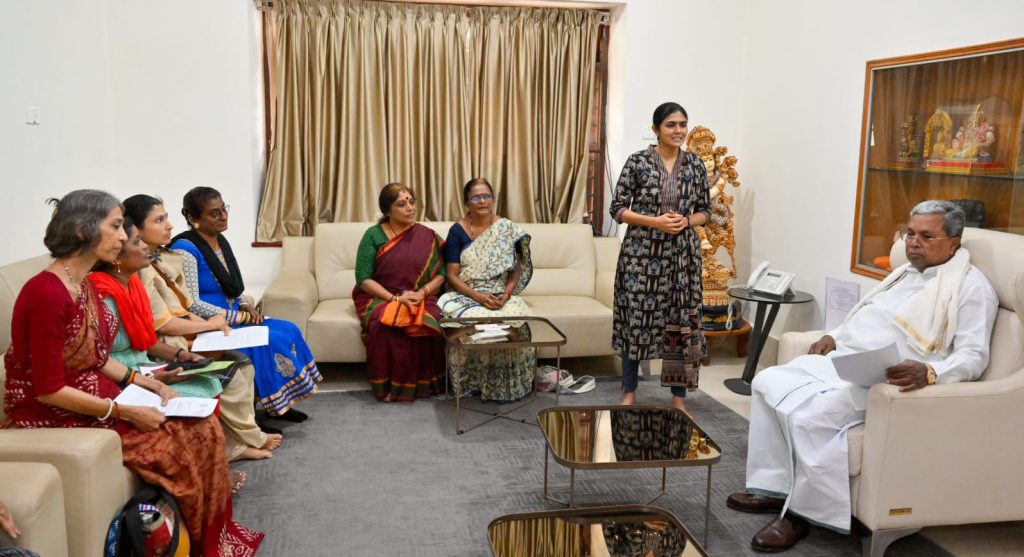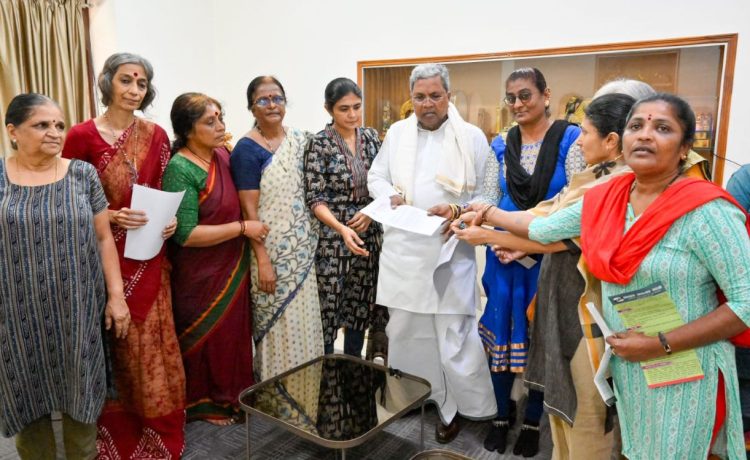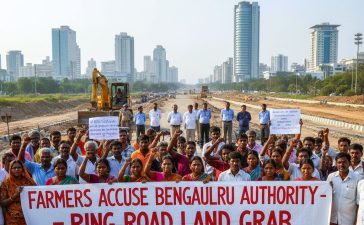Women’s Groups Demand Expanded SIT Probe into Dharmasthala Deaths, Meet Karnataka CM
A delegation representing the “Who Killed Women in Dharmasthala?” movement presses for a broader investigation into cases of violence against women and accountability for officials.
Bengaluru – In a significant move to seek justice for a series of unsolved cases, a delegation of prominent women’s rights activists met with Karnataka Chief Minister Siddaramaiah on Wednesday, demanding an expansive and conclusive investigation into the deaths and alleged violence against women in and around Dharmasthala. The group, operating under the banner “Who Killed Women in Dharmasthala?”, submitted a detailed memorandum urging the government to widen the scope of the existing Special Investigation Team (SIT).
Background and Demands
The “Who Killed Women in Dharmasthala?” collective was formed by women activists and concerned citizens to amplify the often-silenced voices of survivors and victims’ families. Their primary demand is for the state government to bring all pending cases of violence and abuse against women in the Dharmasthala region under the purview of a single, dedicated SIT. This, they argue, is essential to uncover potential patterns and ensure no case is overlooked due to jurisdictional or procedural silos.
During the meeting, the ten-member delegation, which included activists H.S. Champavati, Madhu Bhushan, Shakun Mohini, and Maya Rao, among others, laid out a multi-point agenda. They emphasized that the SIT’s work must be comprehensive, transparent, and continue until a “logical conclusion” is reached, warning against any premature closure of the investigation.
‘ಧರ್ಮಸ್ಥಳದಲ್ಲಿ ಮಹಿಳೆಯರನ್ನು ಕೊಂದವರು ಯಾರು?’ ಮಹಿಳಾ ಆಂದೋಲನದ ನಿರ್ಣಾಯಕ ಮುನ್ನಡೆ, ಮುಖ್ಯಮಂತ್ರಿಗೆ ಸ್ಮಾರಕಪತ್ರ
Key Issues Raised and Governmental Accountability
A critical point of discussion was the government’s inaction against officials who were identified as guilty by a Central Bureau of Investigation (CBI) court in the high-profile 2012 rape and murder case of Sowjanya, a college student. The activists demanded that the state finally take disciplinary action against these “erring officials,” a move they see as integral to restoring public trust in the administration and the police force.
The delegation’s efforts underscore a persistent quest for justice that has spanned years. Their determined advocacy highlights the challenges families face in their pursuit of closure and the systemic hurdles that often impede investigations in cases involving women’s safety.
The Chief Minister’s Response and the Path Forward
The Chief Minister received the memorandum from the activists and provided assurances of his attention. He committed to communicating their concerns and the specifics of their demands with the SIT for further review and necessary action.
The delegation’s push for a widened probe suggests a deep-seated concern among the local community that the current investigation may not be capturing the full extent of the issues in the area. Their campaign represents a powerful, citizen-driven effort to hold institutions accountable.

Media Updates: +91-93531 21474 [WhatsApp] | indianowme@gmail.com
Key Demands
The formal memorandum submitted to the Chief Minister outlines the following key points:
-
Collective Voice for Justice: The “Who Killed Women in Dharmasthama?” movement is a collective of women and concerned citizens formed to champion the cause of survivors and victims of violence in the Dharmasthala region.
-
Expansion of SIT Mandate: The memorandum formally urges the state government to include all cases of violence and abuse against women in Dharmasthala under the jurisdiction of the Special Investigation Team.
-
Action Against Officials: It demands that the government take concrete and immediate action against the officials found guilty by the CBI court in the Sowjanya rape and murder case, asserting that accountability is non-negotiable.
-
Comprehensive and Conclusive Investigation: The document stresses that the SIT investigation must be allowed to continue its work thoroughly and without political or administrative pressure. It must proceed transparently until it reaches its logical conclusion, ensuring justice is served for all victims and their families.
The unwavering resolve of these women activists serves as a potent reminder of the continuous struggle for justice and safety. Their organized, peaceful demand for a thorough investigation exemplifies civic engagement at its most determined, aiming to ensure that no more lives are lost to obscurity and inaction. The state government’s response to these demands is now keenly awaited by the victims’ families and the public alike.
Key Quotes
(For use in articles, social media graphics, or press releases)
-
On the Movement’s Purpose: “We are the collective voice for those who have been silenced. Our campaign, ‘Who Killed Women in Dharmasthala?’, is a solemn promise to the victims and their families that we will not rest until the truth is uncovered and justice is served.”
-
On the Demand for a Wider Probe: “Piecemeal investigations risk leaving victims in the shadows. We demand that the SIT’s mandate be expanded to include all cases of violence against women in Dharmasthala. A pattern can only be seen when all the pieces are on the table.”
-
On Accountability: “The CBI court has already identified the erring officials in the Sowjanya case. The state’s continued inaction is a betrayal of justice. Accountability is the cornerstone of public trust, and it must be restored.”
-
On the Fight for Justice: “This is not just a protest; it is a pilgrimage for justice. We are driven by the memories of the lost and the rights of the living. Our resolve will not waver until this investigation reaches its logical conclusion.”
Important Q & As
Q: Why is a special investigation team (SIT) needed for these cases?
A: An SIT consolidates resources and expertise, allowing for a coordinated investigation. The activists argue that a single team looking at all cases can identify potential links and systemic failures that might be missed when cases are investigated in isolation by different police stations.
Q: What is the significance of the Sowjanya case mentioned?
A: The 2012 rape and murder of Sowjanya is a pivotal, high-profile case from the region. A CBI court not only convicted the primary accused but also explicitly identified other government officials as guilty of wrongdoing. The activists’ demand for action against these officials is a direct test of the government’s willingness to enforce accountability within its own ranks.
Q: What did the Chief Minister actually promise?
A: The Chief Minister provided an assurance that he would “communicate and discuss” the demands with the SIT. This is an initial, positive step that acknowledges their concerns, but it falls short of a direct order to expand the probe. The movement now awaits concrete action following this discussion.
Q: Who are the women behind this movement?
A: The delegation comprises seasoned women’s rights activists and concerned citizens with long histories in social work, including H.S. Champavati, Madhu Bhushan, and Shakun Mohini, among others. Their involvement lends significant credibility and strategic weight to the campaign.
![]()











